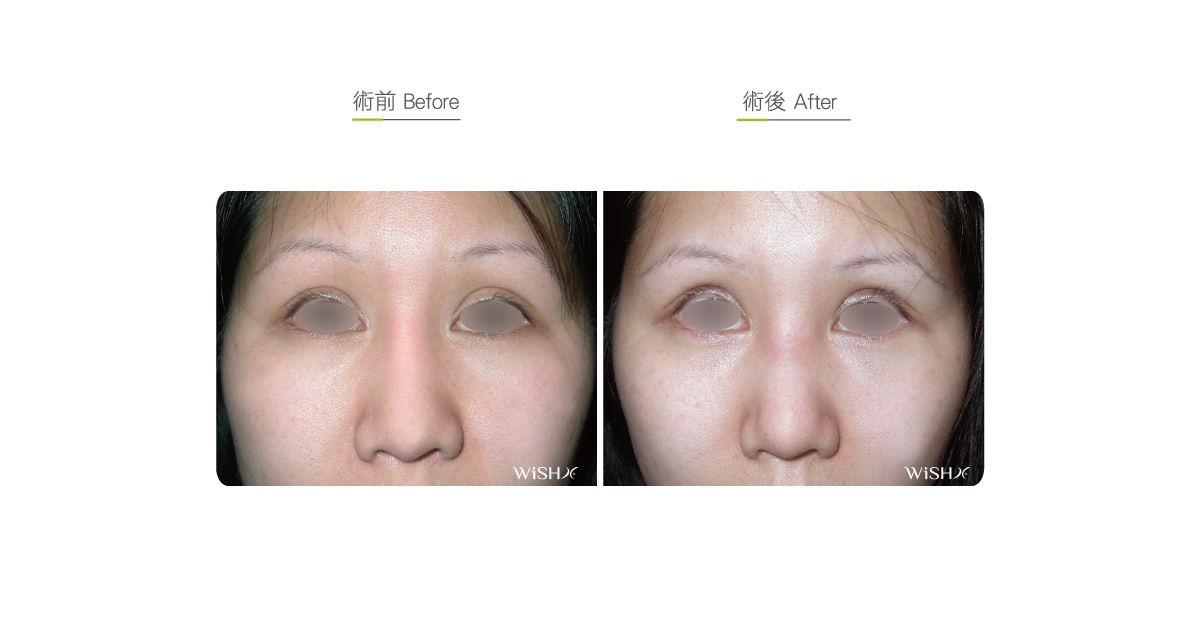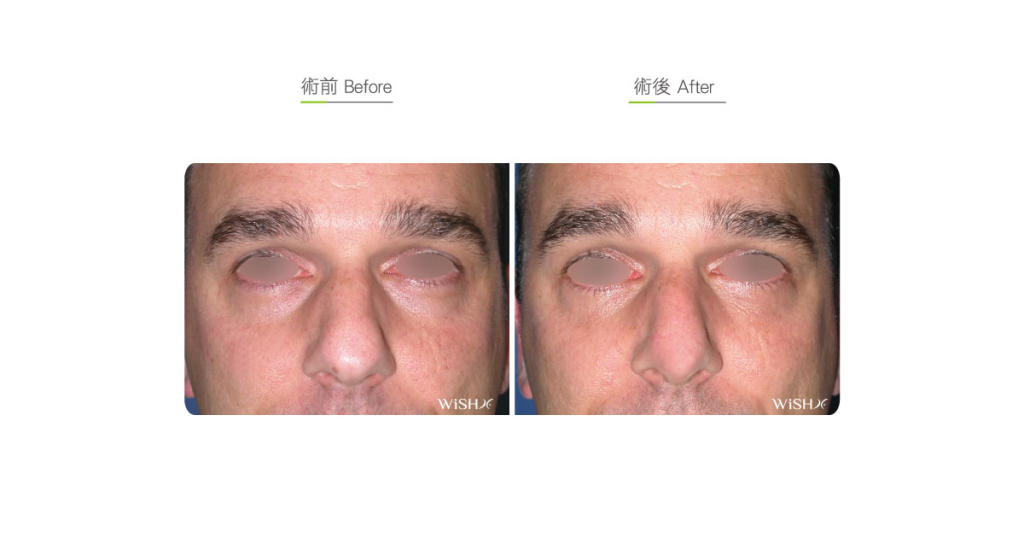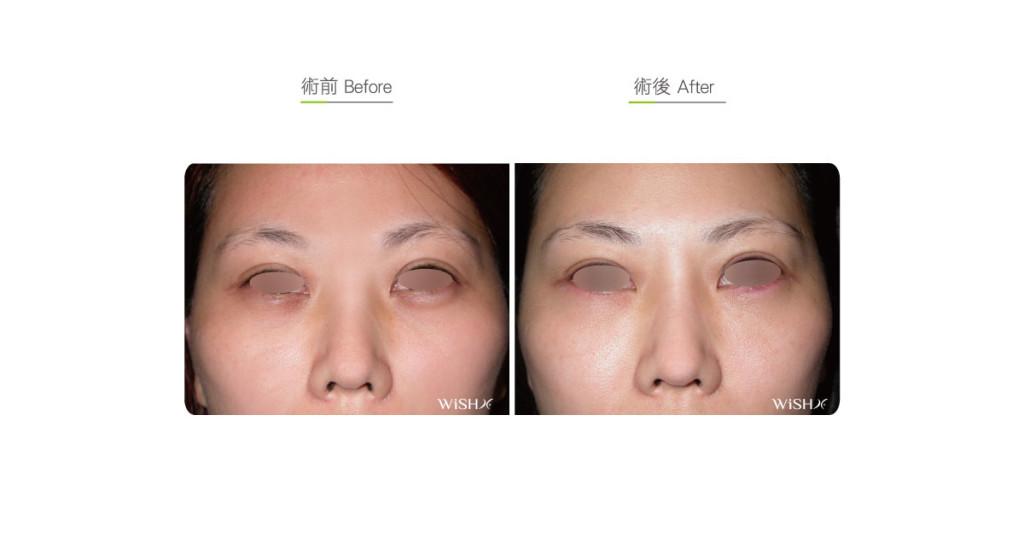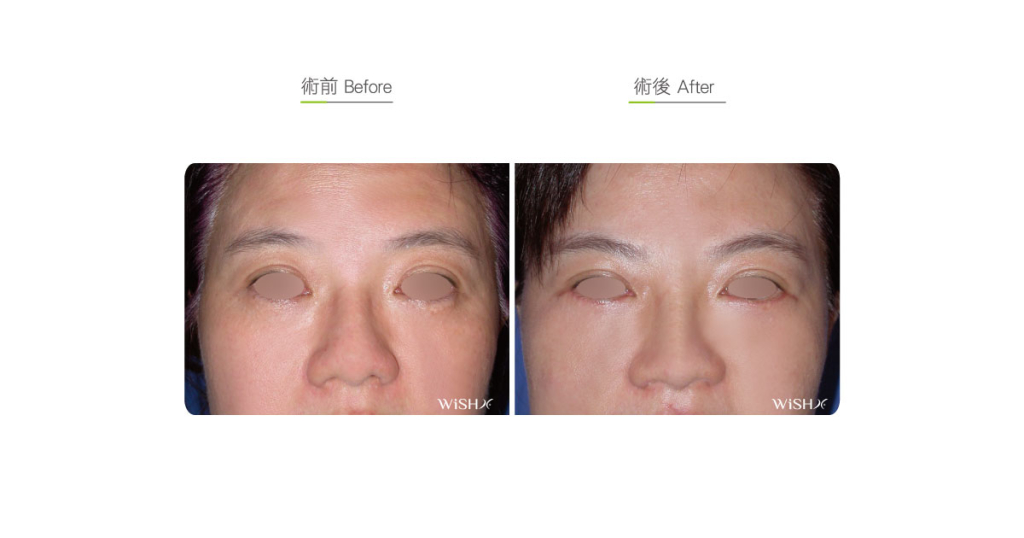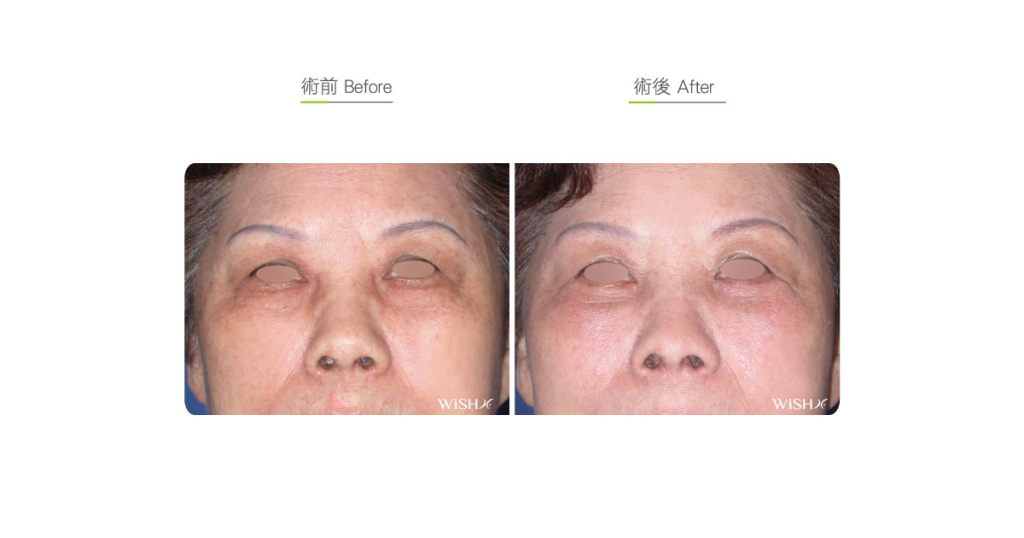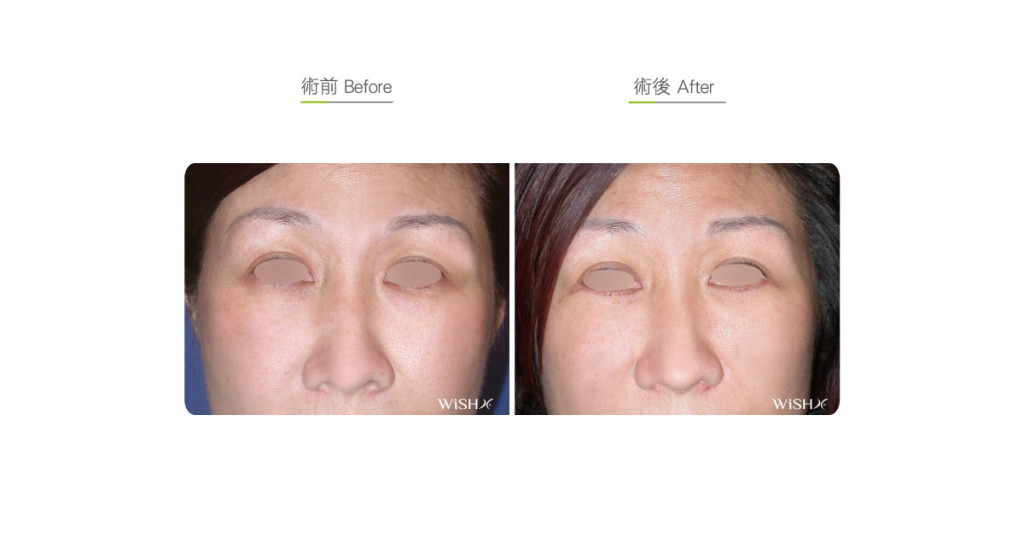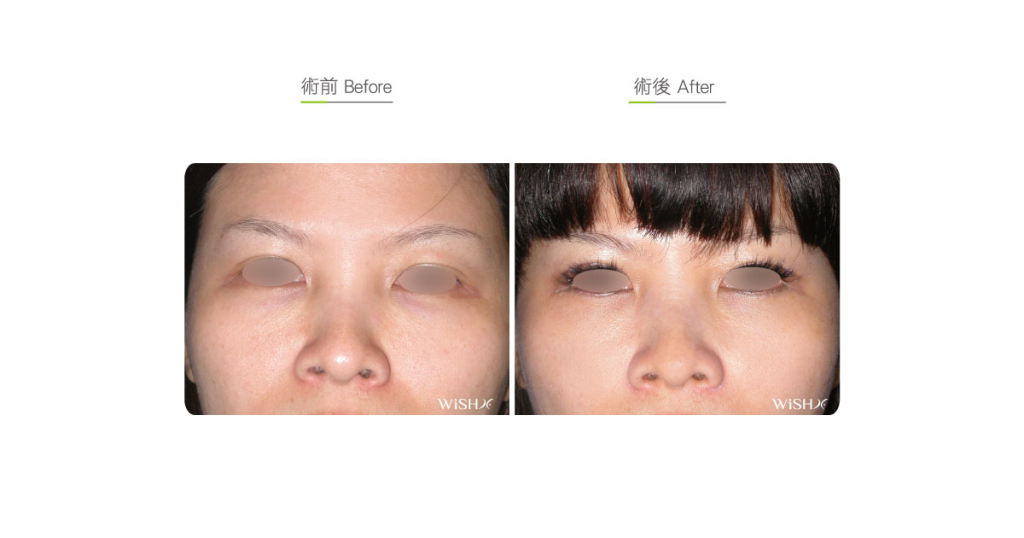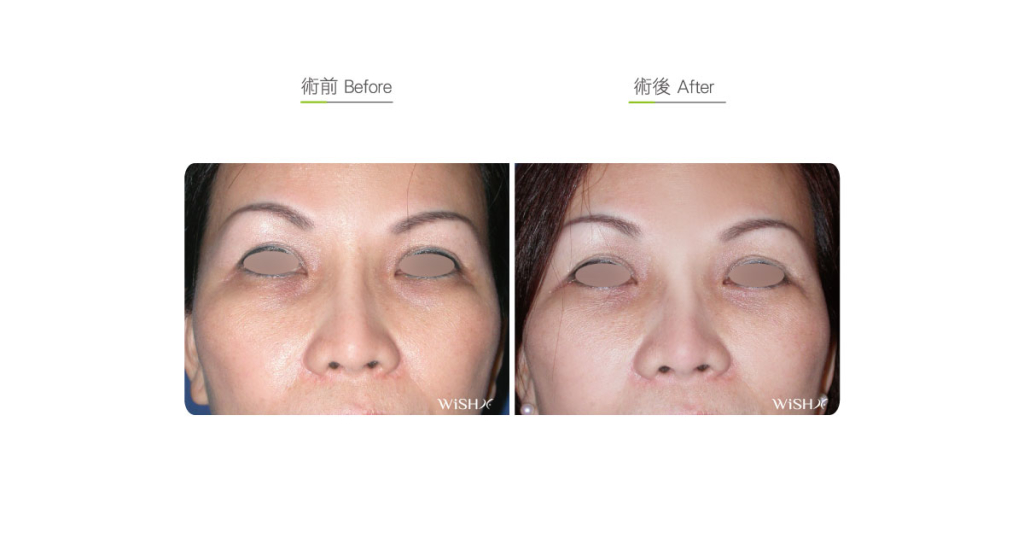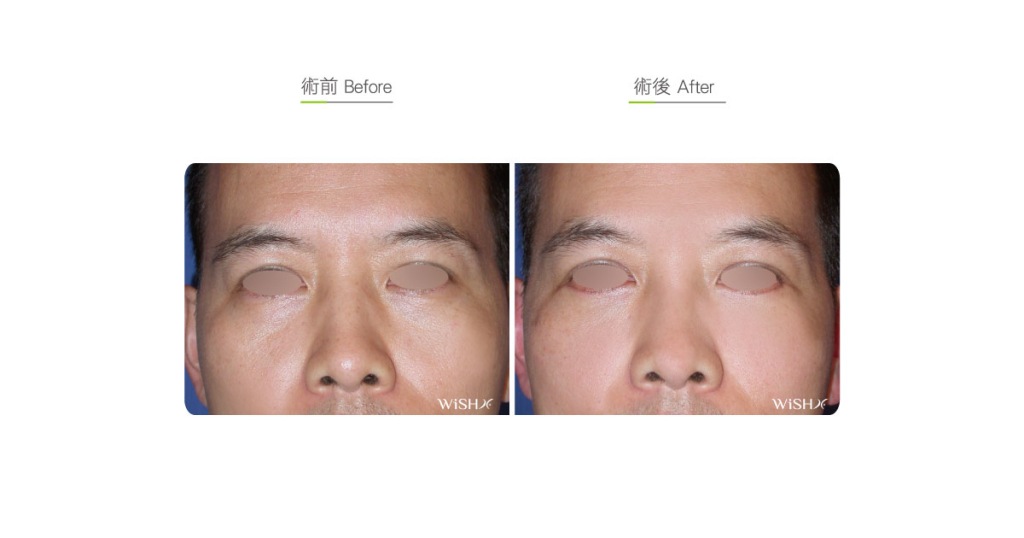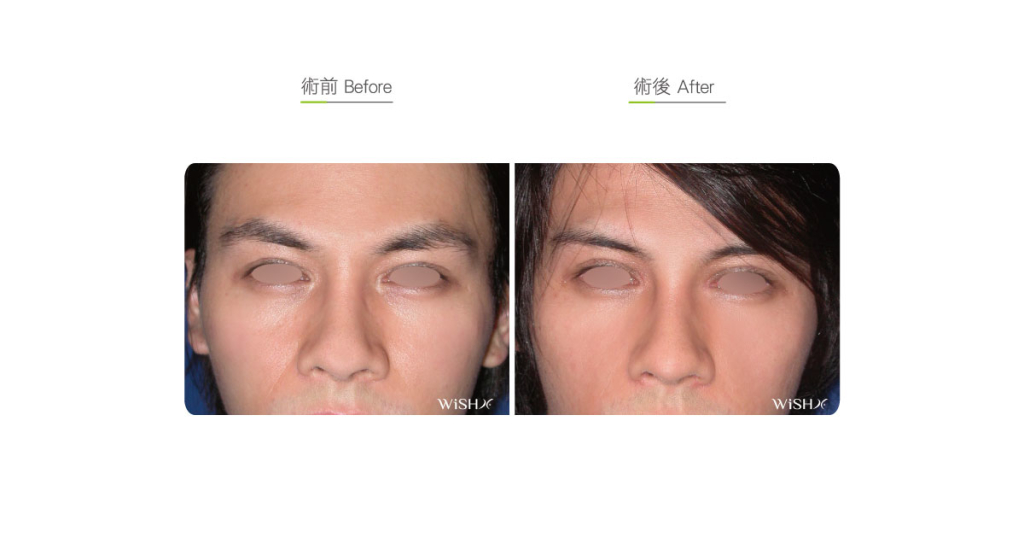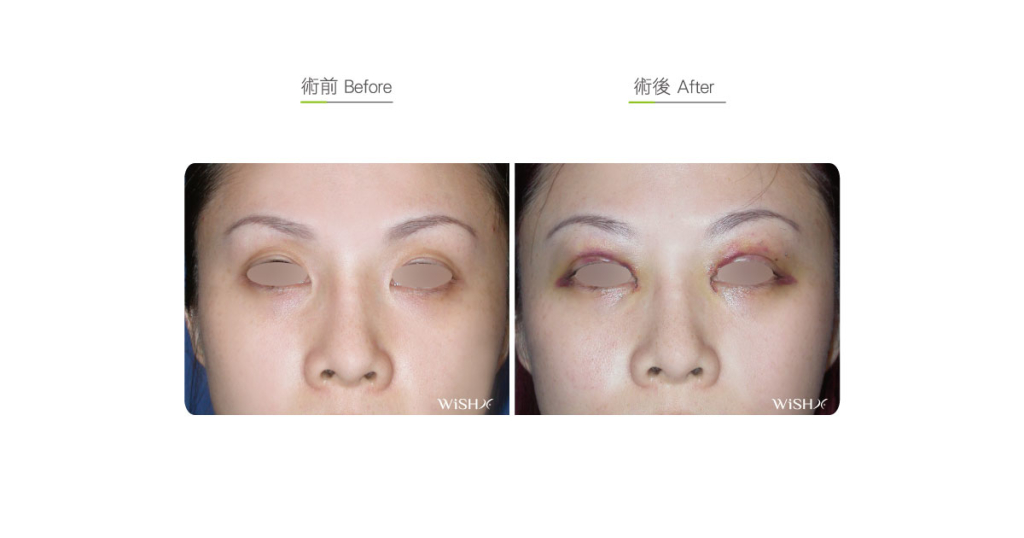Sunken Eyelid Correction
An upper orbit or eye bag and a tear trough depression exacerbates the tired and senile appearance and is one of the most common eyelid aging signs. It is mainly caused by gradual atrophy and the inward sinking of periocular fats due to aging, followed by congenitally high eyebrow bones, and in some cases, it is induced by excess weight loss, staying up late, diseases (such as exophthalmia as a result of hyperthyroidism), or medication. Regardless of the cause, patients with early signs or mild symptoms undergo temporary filling by a nonsurgical method (such as the injection of hyaluronic acid), but for distinct symptoms or orbital depressions unable to be corrected by filler injection, autologous fat grafting should be considered to attain a relatively stable and prolonged improvement. At present, autologous fat grafting in periocular areas is available in the following two methods:
Fat injection
Similar to other facial fat transfers, the physician would first collect a proper amount of reusable fats from other body sites by liposuction and after the purification of the adipocytes, directly inject them into the orbital depression via an extremely thin facial injection tube (filling the sunken upper eyelid or tear-through groove of the lower eye pouch). The advantages of this surgery are its simple process, rapid recovery, and the absence of a scar, while the disadvantages are that it is difficult to accurately control the depth and quantity of the injection, which is prone to incur subcutaneous lumps or unevenness if applied at the thin area of the eyelids. Moreover, as infused fats are not stitched or fixated, some patients have complications such as fat globule dislocation that progresses to the eye pouch. Therefore, surgical indications should be strictly confirmed as not everyone is suitable to undergo such surgeries.
Surgical conditions
Duration
- Type of anesthesia: IV sedation + local anesthesia
- Type of incision: A 2-mm needle hole near the eyelidWound at the liposuction site (approximately 5 mm)
- Recovery: 2–3 days
- Removal of stitches: 5–7 days
General instructions
No food and water on the day of surgery
- Avoid excess cold or hot stimulus to the eyelid fat refilling area for 1 week postoperatively.
- Avoid hard compression or massage of the eyes for 1 month postoperatively.
- Do not smoke or consume alcohol for 3 months postoperatively to prevent the excess absorption of fats.
- Do not lose weight for 6 months postoperatively.
Ideal candidates
- Young patients with sunken eyes whose skin is still elastic
- Patients with thick eyelids that are not loose and droopy
- Those with mild or early sunken eyelids
- Male patients with eyelid or tear-through groove depression
- Patients with premature sunken eyelids due to congenital eyebrow prominence
Possible complications
- Subcutaneous lumps
- Palpable nodes
- Irregular skin
- Overt absorption
- Uneven absorption
Surgical advantages
-
The surgery is simple, and the recovery is rapid.
-
Only injection needle holes are left near the brow, and no scars are noticed.
-
Results last for a longer time than those obtained by the injection of hyaluronic acids.
Surgical drawbacks
-
Subcutaneous lumps or unevenness is more likely to occur.
-
Adipose globule dislocation may occur if there is inappropriate technique or manipulation.
-
It cannot simultaneously resolve eyelid skin looseness.
-
The self-absorption rate is relatively low (an average of 50% can be preserved) that that in other site of body.
Possible procedures in conjunction
Before & After
Fat Injection ( Sunken Eyelid) – Female
Fat Injection ( Tear-Through ) – Male
Fat grafts
Fat grafting is conducted by collecting intact adipocytes from the tommy and then emplacing adipose particles layer by layer into the eyelid depression via a surgical incision; this is therefore commonly combined with double eyelid or lower eye bag surgery. First, a 1-cm small incision is made at the umbilicus, and bulks of intact adipose particles are retrieved, rinsed, and selected; they are then directly emplaced at the depressed eye socket or tear-trough groove via the upper or lower eyelid external incision before the skin appears completely flat and smooth in appearance. Its advantages are that the quantity and depth of fat grafts are controlled by the physician during the operation via direct visual inspection and that fat grafts are less likely to result in subcutaneous lumps due to a difficult inaccurate injection dose in the fat injection. Besides, fat grafting garners more complete and undamaged adipocytes than other common liposuctions, so the adipose survival rate is relatively higher than that obtained by fat injection.
Surgical conditions
Duration
- Type of anesthesia: IV sedation + local anesthesia
- Type of incision: A 1.5–2cm incision at the upper eyelid or a 2.5-cm incision at the eyelash line of the lower eyelidIncision for the collection of adipose tissues at the umbilicus (approximately 1 cm)
- Recovery: 5–7 days
- Removal of stitches: 7 days
General instructions
No food and water on the day of surgery
- Avoid excess cold or hot stimulus to the eyelid fat graft area for 1 week postoperatively.
- Avoid hard compression or massage of the eyes for 1 month postoperatively.
- Do not smoke or consume alcohol for 3 months postoperatively to prevent the excess absorption of fats.
- Do not lose weight for 6 months postoperatively.
Ideal candidates
- Patients with a thin-skinned periocular depression
- Those with sunken eyes and concurrent upper eyelid laxity or a distinct eye bag and tear trough groove
- Those who received a fat injection but show insignificant results or premature absorption
- Those who have undergone eyelid injection of hyaluronic acid or fats but develop lumps or irregularities
- Those with eyelid depression due to prior eye bag removal
Possible complications
- Scarring
- Eyelid scar adhesion
- Lower eyelid ectropion
- Excessive grafting
- Premature absorption
Surgical advantages
-
It is commonly conducted along with double eyelid or eye bag surgery, and results are stable and long lasting.
-
Combined surgeries simultaneously resolve eyelid laxity and depression.
-
Fat grafting can be accurately controlled and is less likely to result in subcutaneous lumps or fat dislocation.
-
The fat survival rate is relatively high (approximately over 60%).
Surgical drawbacks
-
The surgery is relatively extensive and deep, and the postoperative recovery is slow.
-
Another incision should be made at the umbilicus to collect adipose tissues.
-
An upper eyelid or eye bag incision wound may leave scars.
-
Eyelid fold adhesion or ectropion may occur.
Possible procedures in conjunction
Before & After
Fat Grafts ( Tear-Through ) – Female
Fat Grafts ( Tear-Through ) – Male
Fat Grafts ( Sunken Eyelid ) – Male
After One Week ( Sunken Eyelid Correction )
Comparison of periocular fat filling methods
| Fat injection | Fat grafts | |
|---|---|---|
| Ideal candidates | Young patients who have thick skin and early sunken eyes or tear-through groove, male patients | Patients with moderate-to-severe sunken eyes or tear trough grooves due to aging or combined eyelid skin looseness, female monolid patients |
| Anesthesia method | IV sedation + local anesthesia | IV sedation + local anesthesia |
| Surgical incision | Single injection needle hole at the eyelid | Linear incision on upper or lower eyelid |
| Method for collecting fats | Low-pressure liposuction | Retrieval of intact adipose tissues |
| Incision for collecting fats | Small (approximately 0.5 cm) | Relatively long (approximately 1 cm) |
| Surgical method | Subcutaneous fat injection | Deep layer fat emplacement |
| Concurrent surgery | No | Double eyelid surgery or lower eye bag external incision surgery (lower blepharoplasty) |
| Self-absorption rate | Relatively high (>50%) | Low (<40%) |
| Adipose lumps | Probable | Relatively few |
| Fat dislocation | Probable | No |
| Result durability | Relatively short (approximately 2–3 years) | Relatively long (more than 3–5 years) |

